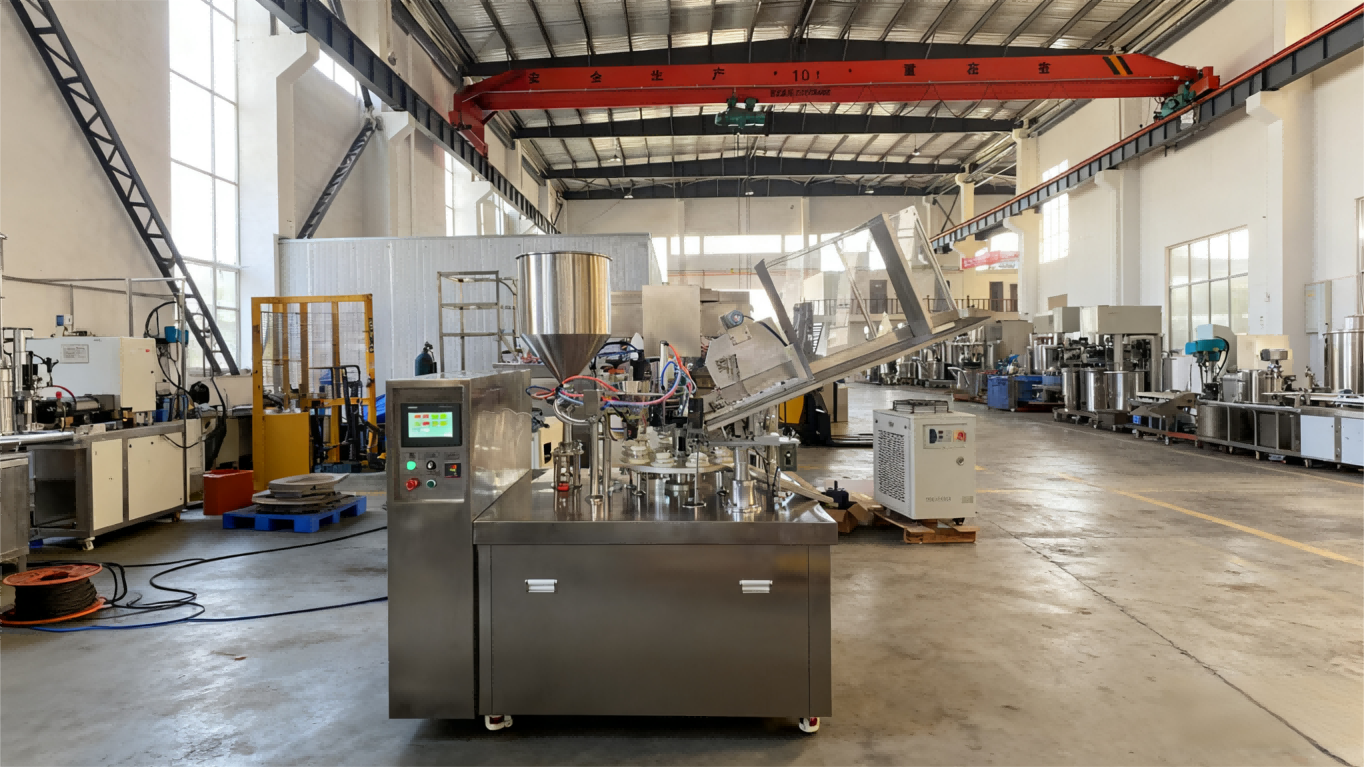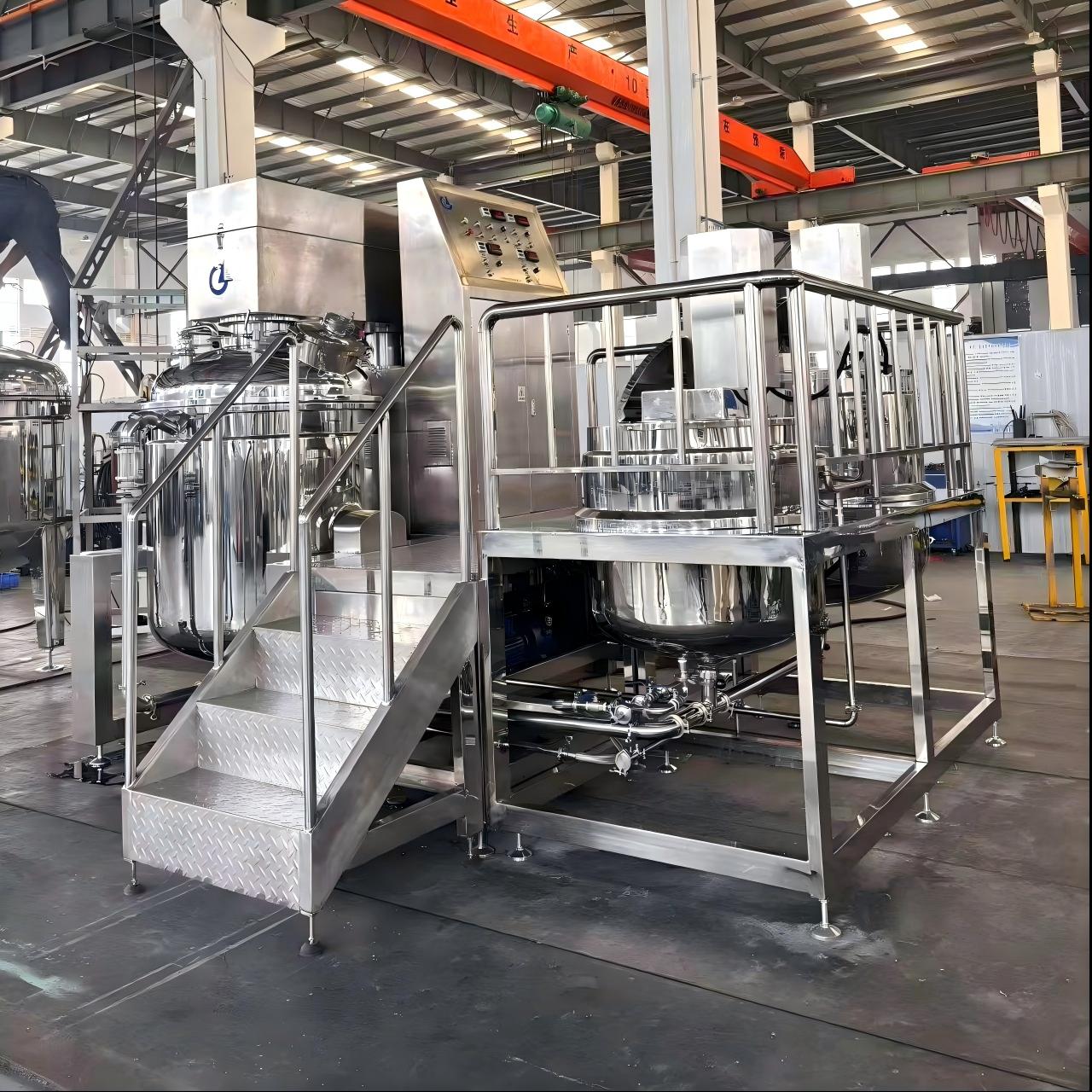How to Select the Right Vacuum Emulsifying Mixer for Face Cream Production?
When producing face cream, selecting a suitable vacuum emulsifying mixer is critical to ensuring consistent product quality and efficient production. Below is a structured guide to help you make an informed decision, based on core factors that align with face cream manufacturing needs:
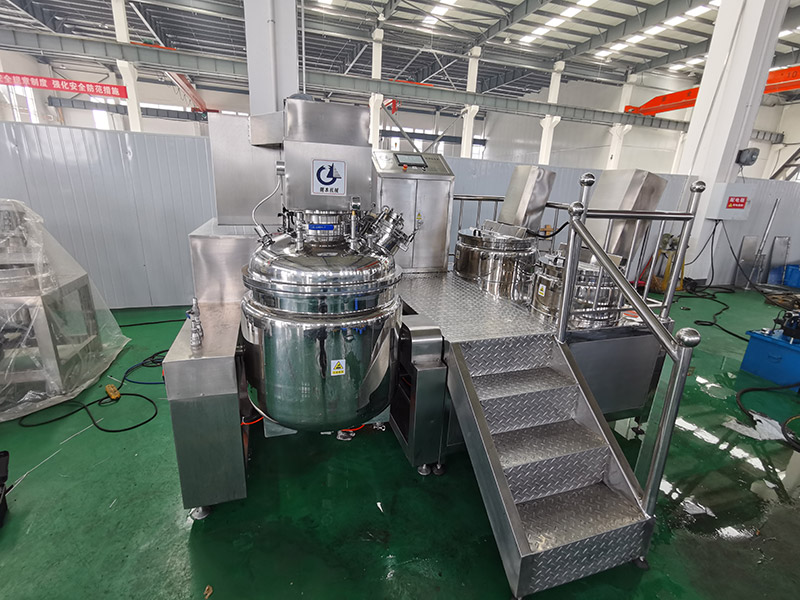
1. First, Match the Mixer Type to Your Production Scale (Batch vs. Continuous)
The first and most foundational choice is between batch mixers and continuous mixers—this directly depends on your daily output and production mode:
Batch mixers: Ideal for small-to-medium scale production (e.g., start-ups, lab R&D, or brands with 50–500kg daily output). They mix a fixed quantity of ingredients in one cycle (e.g., 20L, 100L batches), offering flexibility for frequent formula changes (e.g., switching between moisturizing cream and anti-aging cream).
Continuous mixers: Designed for large-scale mass production (1,000kg+ daily output, e.g., major cosmetic brands). They enable continuous feeding of raw materials and non-stop mixing output, reducing downtime between batches—but are less flexible for formula adjustments.
2. Choose the Right Agitator Design for Your Cream Formula
The agitator’s design directly affects emulsification efficiency and final cream texture, so it must match your formula’s viscosity and ingredient properties:
Anchor agitators: Best for high-viscosity creams (e.g., thick night creams, body butters). Their slow, sweeping motion ensures uniform mixing of thick mixtures and prevents material adhesion to the tank wall.
Propeller agitators: Suitable for low-to-medium viscosity formulas (e.g., light day creams, lotions). They rotate at high speed to create strong turbulence, accelerating the fusion of oil and water phases.
Turbine agitators: A versatile option for medium-viscosity creams. They combine radial and axial flow to balance mixing speed and uniformity, making them ideal for formulas with both liquid and powder ingredients (e.g., creams with mineral powder).
3. Prioritize Vacuum Capability for Smooth, Stable Cream
Air bubbles are a major enemy of face cream—they cause a grainy texture and reduce shelf life. When evaluating vacuum systems:
Focus on vacuum level: Aim for a mixer that can reach a vacuum degree of -0.095MPa to -0.098MPa (the standard for cosmetic emulsification). This level effectively removes air bubbles and volatile impurities (e.g., solvent residues from plant extracts).
Check vacuum speed: A fast vacuum pump (e.g., reaching target vacuum in 5–8 minutes) shortens production time and avoids prolonged exposure of heat-sensitive ingredients to air.
4. Ensure Precise Heating & Cooling Systems
Face cream emulsification requires strict temperature control (typically 55–65°C for oil-water mixing, then cooling to 35–40°C for adding active ingredients). The mixer’s temperature control system should meet two key criteria:
Temperature accuracy: Look for a system with ±1°C precision—even a 2°C deviation can break emulsions or denature actives (e.g., vitamin E).
Heating/cooling speed: Opt for jacketed tanks with circulating heat transfer oil (for heating) and chilled water (for cooling). This design ensures fast, uniform temperature changes, avoiding local overheating or undercooling.

5. Evaluate Automation Features to Streamline Production
Modern automation reduces human error and ensures batch consistency—critical for cosmetic production (where even small formula variations affect brand reputation):
PLC control + touchscreen interface: Allows storing 50+ recipes (e.g., saving parameters for “moisturizing cream” or “acne-fighting cream”) and one-click startup, eliminating manual parameter adjustment.
Real-time monitoring: Choose mixers with sensors for temperature, vacuum level, and agitator speed—data is displayed in real time, and alarms trigger if parameters deviate (e.g., overheating), preventing defective batches.
Data logging: For brands needing GMP compliance (e.g., pharmaceutical-grade cosmetics), select models that automatically record production data (time, temperature, vacuum) for traceability.
6. Prioritize Easy Cleaning & Maintenance for Hygiene
Face cream is a leave-on product, so equipment hygiene is non-negotiable. Look for these design features:
Smooth, crevice-free tank interior: Avoid mixers with sharp corners or weld seams—these trap residue and breed bacteria. Opt for 316 stainless steel tanks (more corrosion-resistant than 304 stainless steel, ideal for acidic ingredients like fruit extracts).
CIP (Clean-In-Place) system: A must for large-scale production. It uses high-pressure water/chemical cleaners to automate tank cleaning, reducing manual labor and ensuring consistent sanitization (meets ISO 22716 cosmetic hygiene standards).
Easy disassembly: For small-batch mixers without CIP, ensure agitators and seals can be disassembled in 10–15 minutes—this simplifies thorough cleaning between formula changes.
7. Don’t Overlook Safety Features
Industrial equipment safety protects operators and prevents production accidents:
Emergency stop buttons: Installed on both the control panel and tank body for quick shutdown in case of malfunctions (e.g., agitator jamming).
Interlocked guards: The mixer will not start if the tank lid is open, preventing hands or tools from being caught in moving parts.
Overflow protection: A sensor triggers an alarm if the mixture exceeds the tank’s maximum capacity, avoiding spills and equipment damage.
Final Tip for Selection
After narrowing down options based on the above factors, request a sample test: Provide your face cream formula to the manufacturer, and ask them to run a small-batch production (e.g., 10–20L) using the mixer. This lets you verify the cream’s texture, stability, and emulsification quality firsthand—ensuring the equipment truly fits your needs.
By aligning the mixer’s features with your production scale, formula, and hygiene requirements, you can select a vacuum emulsifying mixer that delivers consistent, high-quality face cream while optimizing production efficiency.
News
- Latest News
- Solutions
- FAQ
Recommend Products
-
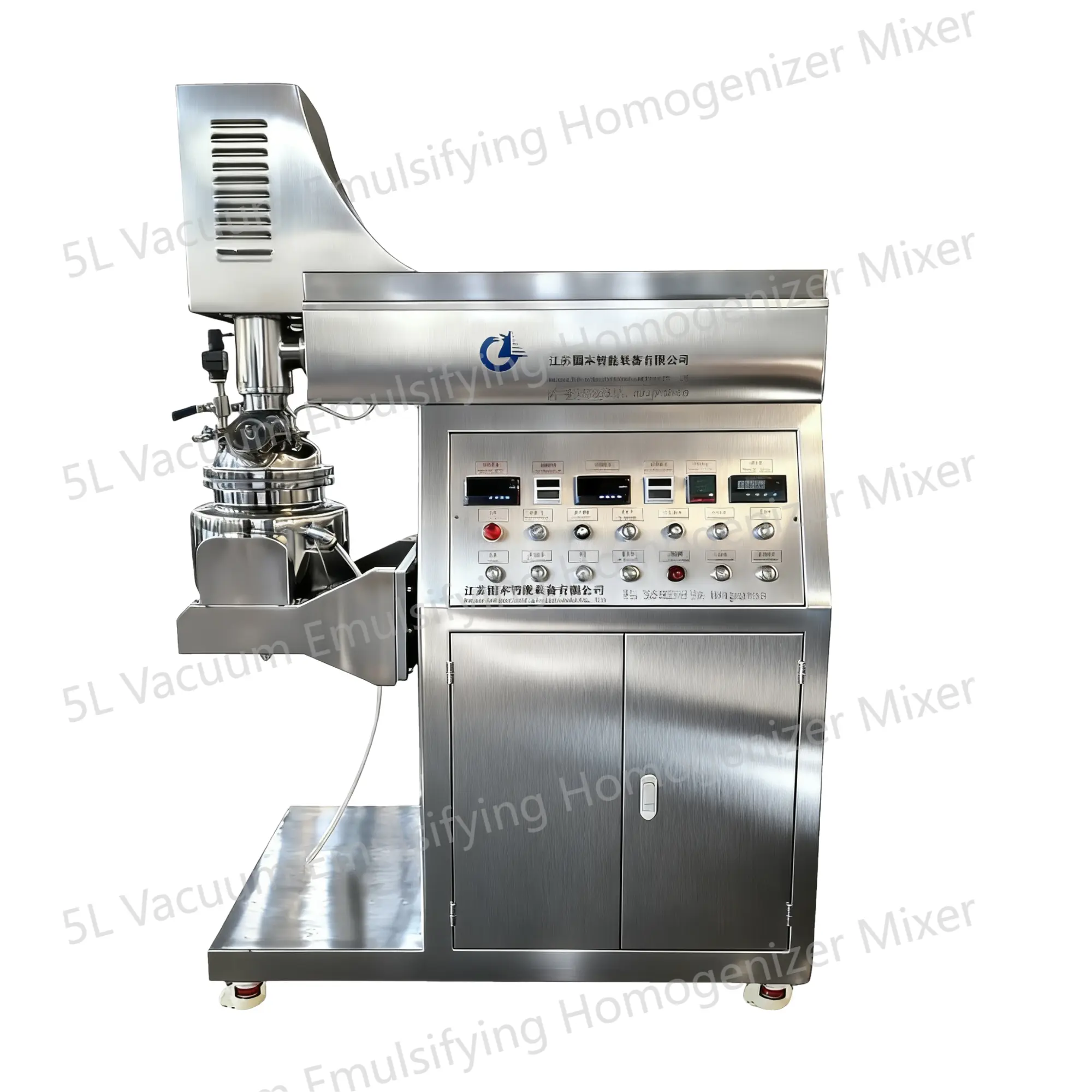 5L Vacuum Emulsifying Homogenizer Mixer
5L Vacuum Emulsifying Homogenizer MixerThe 5L vacuum emulsifying mixer is a device designed for emulsifying and mixing various substances in a vacuum environment. This equipment is equipped with a mixing tank with a capacity of 5 liters and is widely applied in industries such as food, pharmaceuticals, cosmetics, and pesticides.
-
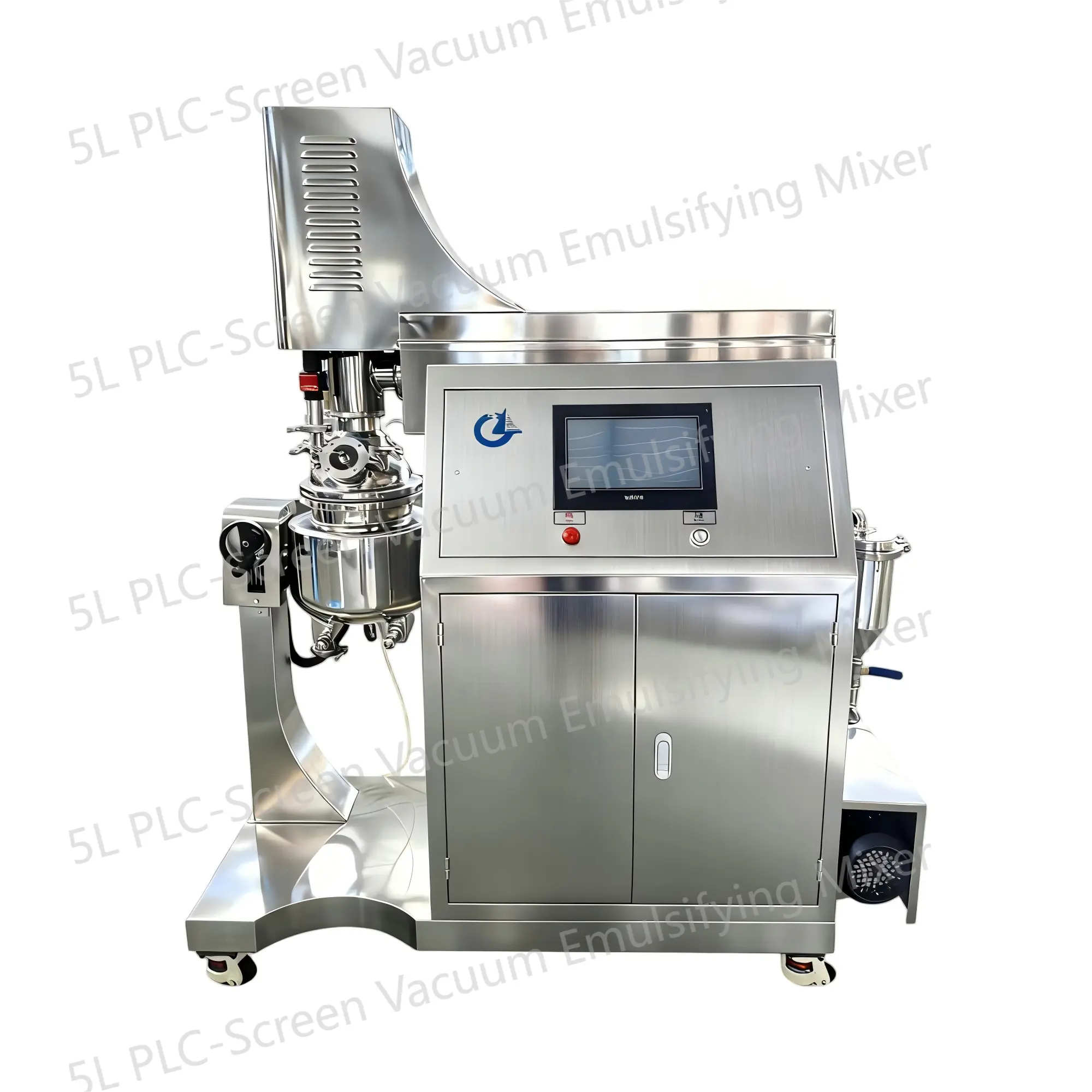 5L PLC-Screen Vacuum Emulsifying Mixer
5L PLC-Screen Vacuum Emulsifying MixerThe 5L PLC-Screen Vacuum Emulsifying Mixer is a device designed for emulsifying and mixing various substances in a vacuum environment. This equipment is equipped with a mixing tank with a capacity of 5 liters and is widely applied in industries such as food, pharmaceuticals, cosmetics, and pesticides.
-
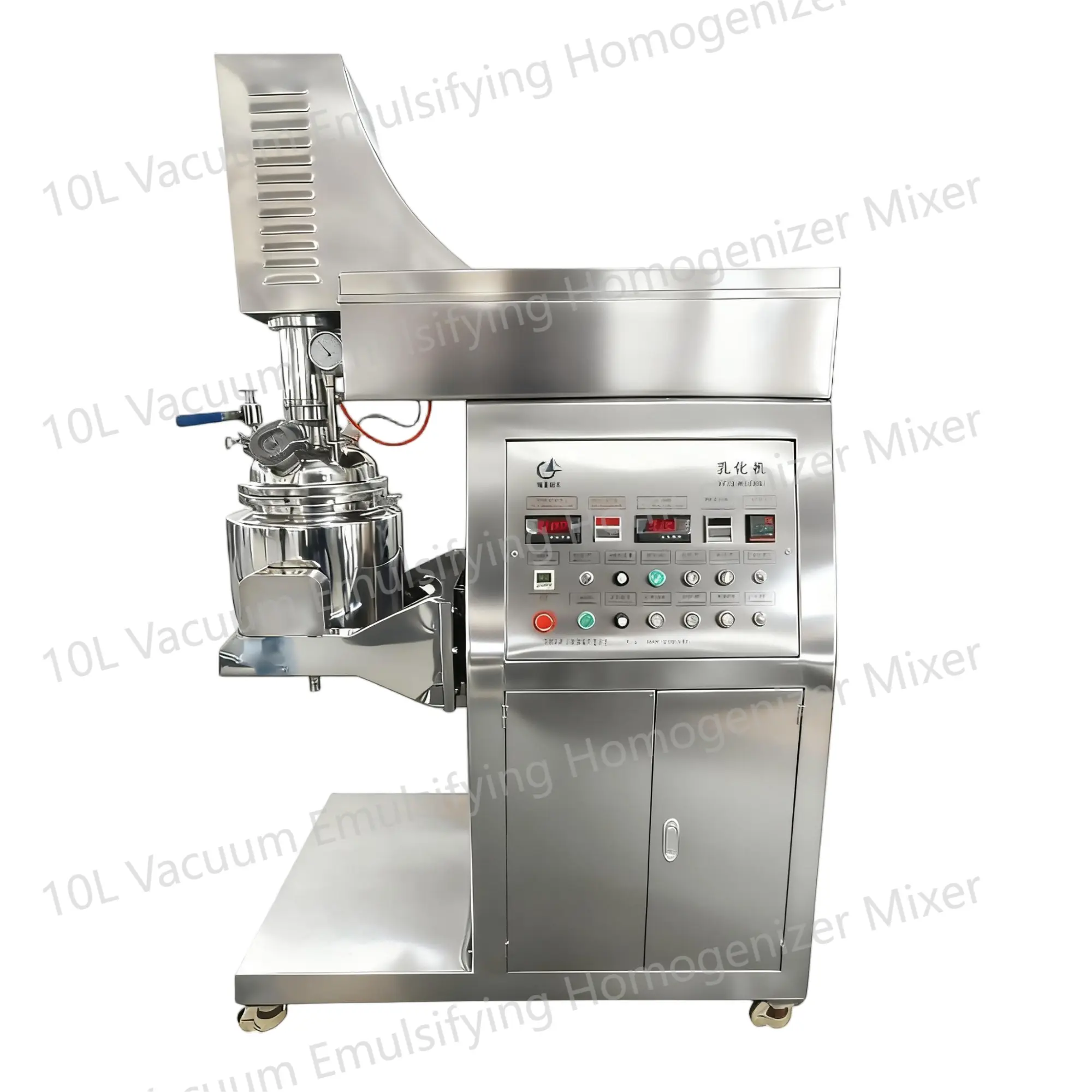 10L Vacuum Emulsifying Homogenizer Mixer
10L Vacuum Emulsifying Homogenizer MixerThe 10L Vacuum Emulsifying Mixer is a device used for emulsifying and mixing various substances in a vacuum environment. It is commonly used in industries such as food, cosmetics, and pharmaceuticals.


 English
English Russian
Russian French
French Spanish
Spanish Portuguese
Portuguese Korean
Korean Japanese
Japanese Thai
Thai
